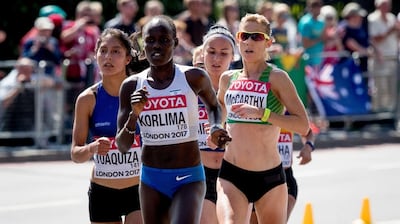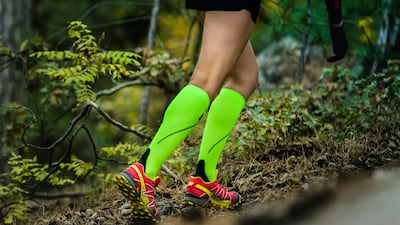For all the undoubted joys and health benefits it confers, running can be a double-edged sword – the more you train and race, the greater your risk of picking up injuries.
The extreme end of the injury spectrum includes muscle tears and stress fractures; but at the milder end are typical side-effects such as exercise-induced muscle damage (EIMD). Some of the symptoms of EIMD – soreness, swelling and transient reductions in muscle strength – will be familiar to a lot of readers.
Approaches to the alleviation of EIMD have included cold water immersion, massage and antioxidant supplementation. For example, an Irish study reported in the Journal of Science and Medicine in Sport (September 2013), by Dr Alan Dunne and colleagues of the department of physiology at Trinity College Dublin, was the first to examine the effect of cold-water immersion as a recovery strategy on subsequent running performance in normal ambient conditions.
They found that “. . . cold water immersion performed between two exhaustive running bouts lasting up to around 15 minutes significantly improves running time to failure in the second bout compared with un-immersed passive rest in moderate ambient temperatures (around 22 degrees Centigrade)”.
Also in 2013, and in the first systematic review of its kind – published in the British Journal of Sports Medicine – a team led by Jessica Hill, of St Mary's University College, Twickenham, analysed the peer-reviewed literature "on the efficacy of compression garments in recovery from damaging exercise".
Dr Hill told The Irish Times that "the results of the study indicated that the use of compression garments can reduce the severity of muscle soreness following exercise that results in muscle damage".
“This includes high-intensity, or prolonged endurance running such as marathon running. It may also benefit athletes and runners who are undertaking a training programme with sessions programmed close together.”
Someone who can attest to the efficacy of compression garments is Irish international marathon runner Claire McCarthy.
Holder of a Bachelor of Science in Exercise Physiology, McCarthy was placed 33rd in this year’s IAAF Women’s World Championships, with a time of 2:38:36.
The Cork Leevale Athletic Club star told The Irish Times that she has worn compression socks since 2009, after sustaining a series of calf tears during some gruelling training sessions.

“My calf injuries,” she said, “are very infrequent now, and I wear the compression socks for two main reasons. First, they aid in supporting lower leg stability during long and difficult races, while also helping to prevent muscle cramp. Second, they increase blood flow to the calf and help to speed up the recovery post- race/training session.
“Compression socks can also help to regulate temperature within the muscle if the weather conditions are severe. I would highly recommend them, but shop around for the socks that suit you.”
McCarthy’s experience confirms the findings of Hill and colleagues that wearing compression garments not only helps reduce EIMD, but also speeds up the recovery of muscle function. The researchers found that while some authors suggest that EIMD is the outcome of “disruption to the muscle fibre and surrounding connective tissue, others [suggest] that it is associated with the inflammatory response and yet others [suggest] that it is a combination of both.”
But what makes compression garments helpful? “Although somewhat speculative,” said Dr Hill, “it is thought that applying compression generates an external pressure gradient that attenuates changes in osmotic pressure and reduces the space available for swelling and haematoma to occur”.
Other investigations where researchers sampled the blood concentration of a protein called creatine kinase (CK) – a marker of EIMD – found that compression garments were able to reduce the concentration of CK. One possible explanation is that an improved blood flow through the veins, as a result of wearing compression garments, might help in the clearance of metabolites such as CK.

In the journal Sports Medicine (April 2016), Dr Florian Engel and colleagues – in a systematic review of 32 peer-reviewed studies published between 1987 and 2015 – asked: Is there evidence that runners can benefit from wearing compression clothing?
They concluded: Our present findings suggest that by wearing compression clothing, runners may improve variables related to endurance performance (ie, time to exhaustion) slightly, due to improvements in running economy, biomechanical variables, perception, and muscle temperature. They should also benefit from reduced muscle pain, damage, and inflammation.
In a very recent approach to address the ways in which garments might improve recovery following training, the results of a study published on October 12th this year in the journal PLOS One offered opportunities for further research with the publication of a paper entitled: Influence of platinum harmonized textile on neuromuscular, systemic and subjective recovery.
The clothing manufacturer Venex Life-Science has produced platinum-containing loose-fitting – not compressive – trousers and tops using nanotechnology. The recovery mechanism is said to be mediated by platinum having a role in activating a skin receptor which sends a signal to the brain, which in turn influences the secretion of nerve growth factor that can activate the parasympathetic nervous system; the so-called “calming” part of the nervous system.
A study of 13 strength-trained male participants concluded that “wearing a platinum harmonised textile following exercise did not improve neuromuscular and systemic recovery in a trained male population to a statistical noticeable extent. However, the findings for the subjective parameters suggest some potential for enhanced recovery that requires further research.
It seems that the evidence base for the usefulness of compression garments is fairly solid.
As for platinum-containing garments, the jury is still out.










